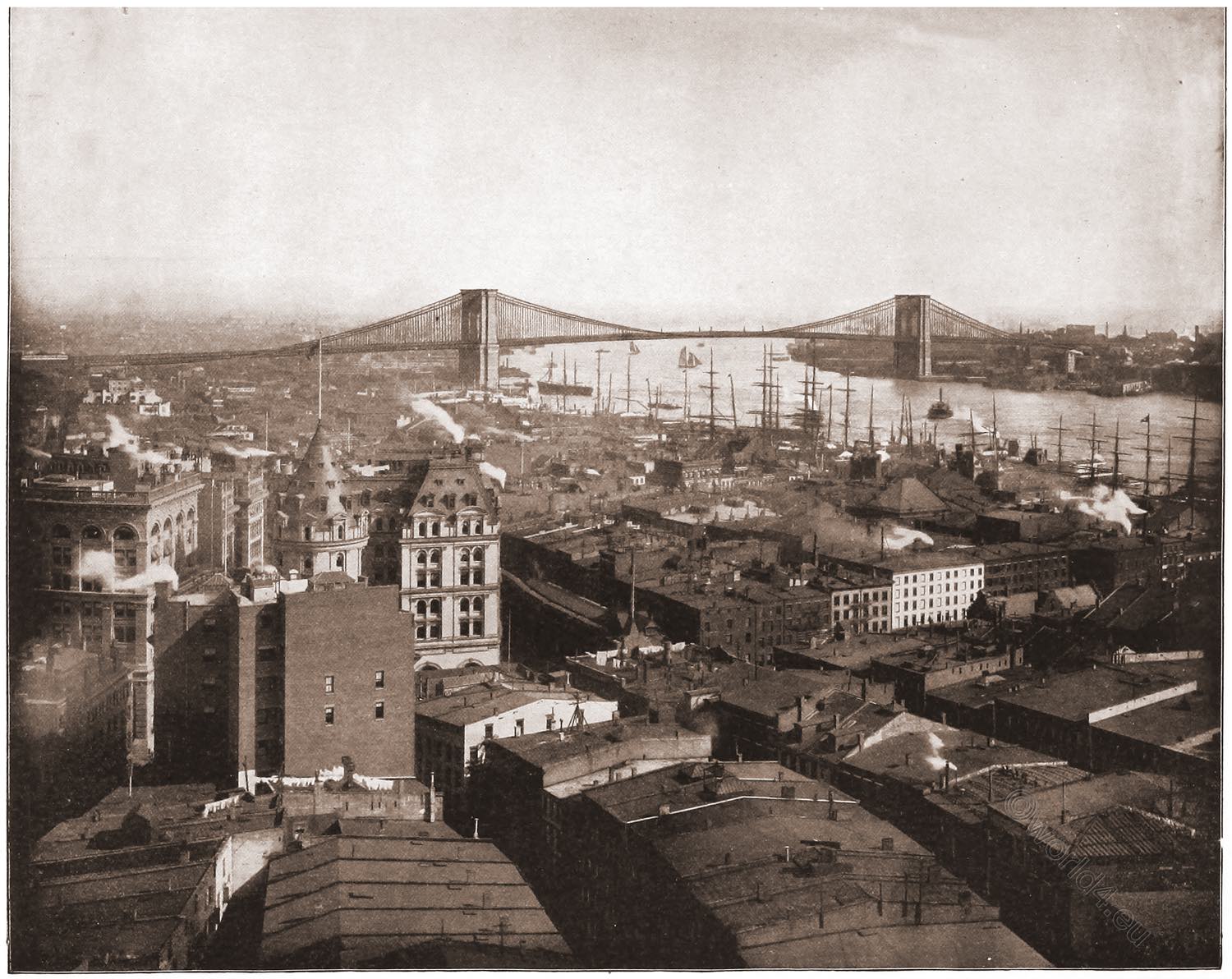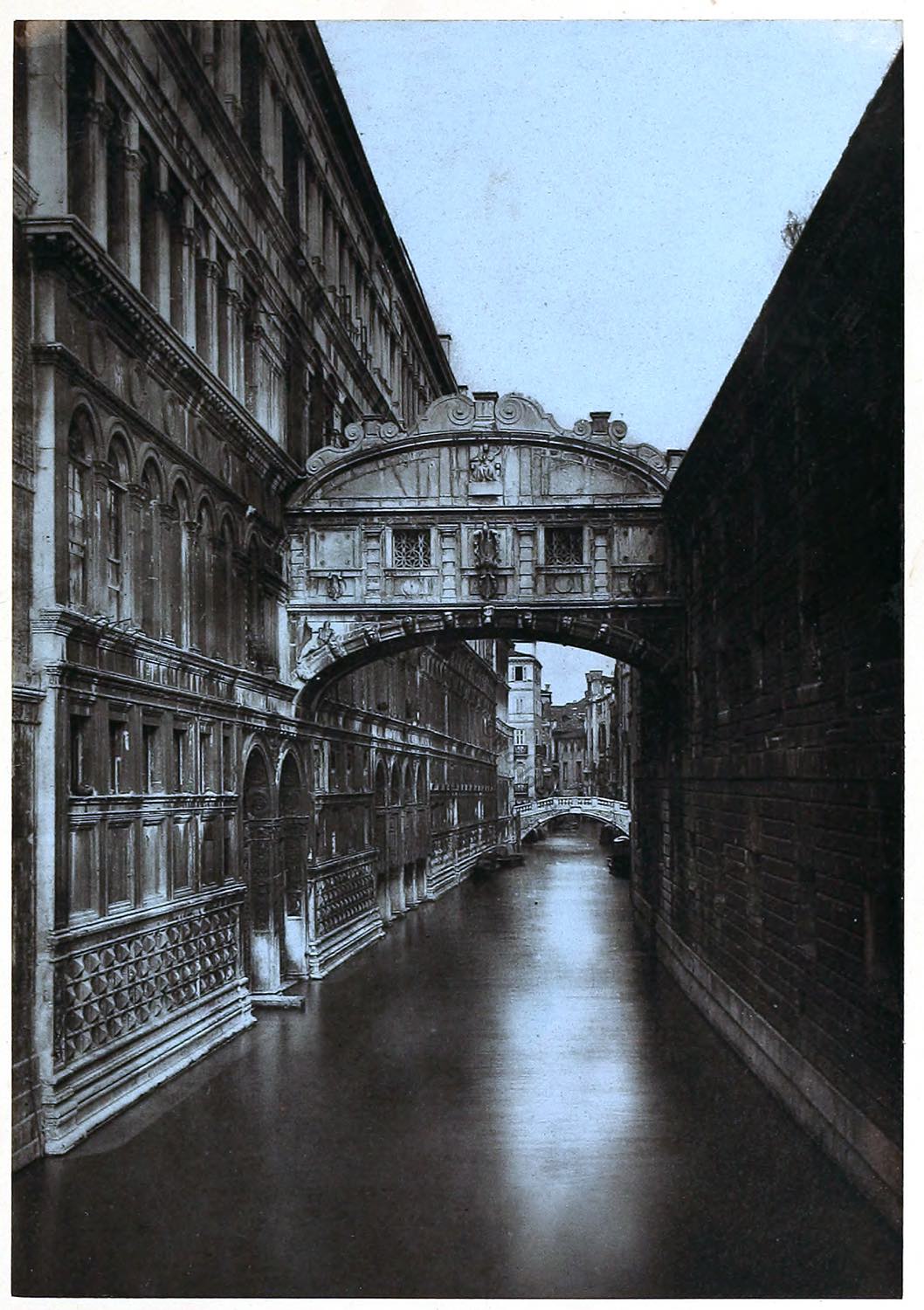The Bridge of Nanjing.
It has been previously stated in the pages of these volumes, that Nanjing is not seated immediately on the banks of the Yang-tse-kiang, but at the distance of three miles from them, and connected with that noble river by a wide and deep canal; so considerable, indeed, is this artificial navigation, which continues parallel to the west and south walls of the city, at a trifling interval only, that the bridges thrown across it are works of much architectural pretensions.
Near where the Porcelain Tower formerly stood, the largest and principal bridge of Nanjing spans the main trunk of the canal, forming a communication between an extensive suburb, and the west gate of the city. It consists of six well-turned arches of unequal width, and is altogether a scientific work, being kept down nearly to a level with the banks at either extremity.
Chinese bridges are constructed on different principles, in different parts of the empire; so much indeed does diversity prevail, that is, science in one place, ignorance in another, that neither censure nor applause can be bestowed upon the architects of the empire generally in this particular respect. Arches, pointed like the Early English, may be found in one locality; the horse-shoe, or Moorish form, abounds in another: ornamental bridges, in gardens and pleasure-grounds, consist mostly of one opening, either arched or flat; some of those built over navigable rivers have piers so lofty, that junks of two hundred tons burden can sail under them without striking their masts ; one arch, and of large dimensions, is of frequent occurrence; so also are bridges of a number of arches, and that near Sou-tchoo-foo consists of no fewer than ninety-one.
That beauty and strength are not inseparable in works of art, is at least fully illustrated in the structure of the graceful one-arch bridge of China. Each stone is cut so as to form the segment of a circle, and, as there is no keystone, ribs of wood, fitted to the convexity of the arch, are bolted through the stones by iron bars, fastened securely into the dead-work of the bridge. Sometimes wood is dispensed with, in which case the curved stones are mortised into long transverse blocks of the same material. In some parts of the empire, on the other hand, arches of smaller stones, and pointed to a centre, as in Europe, are everywhere seen. The arches of the towers on the Great Wall, are all exactly turned, and the masonry of that miracle of labour is referred to by those who have examined it, as a perfect model of enduring industry.
From what has here been stated, it would appear, that not only are the Chinese in perfect possession of the true scientific principles of arching in masonry, but still further, that they acquired that knowledge before any other known nation. Arches cut in the solid mountain occur in Hindoo excavated temples, but, when independent stones were employed, and the building was to be super structed on columns, then the stones above the capitals were overlaid, like inverted steps, till they met in the central point above and between the two columns, resembling, at a little distance, a Gothic arch.
Neither the Persians nor the Egyptians appear to have been acquainted with the circular arch, for no such form occurs in the ruins of Persepolis, Balbec, Palmyra, or Thebes, nor does it seem to have been much used in the magnificent buildings of the Romans, antecedently to the time of Augustus. Those that are now disclosed in the disinterred fragments of Pompeii, are on a diminutive scale, seldom employed to sustain a heavy weight, but principally-to decorate and relieve the monotony of a continuous surface. If Chinese annals deserve any credit, the arches in the towers of the Great Wall were constructed before the western nations of the world were acquainted with the invention. But, independently of their own testimony, circumstantial evidence favours the decision, that, with them, this discovery of so much beauty and utility, first originated.
The bridge of Nanjing is built entirely of red granite, with circular arches turned with cuneiformed stones, and resting on piers of solid masonry. That its projectors were little apprehensive for its stability, is shown by the erection on each side of the causeway, of a row of substantial dwellings, one story in height. These do not prove as injurious as droves of cattle, coaches driven at a rapid pace, or armies marching with regulated step (the most severe test of a swinging bridge); but they do, to a certain extent, establish the sustaining ability of the structure. On one side of Nanjing great bridge is shown the city wall, on the other the once famous Porcelain Tower; while the state-junk, conveying an imperial commissioner, who had just arrived to treat with the English, has reached its berth at the principal landing-place.
Source: China, in a series of views, displaying the scenery, architecture, and social habits, of that ancient empire. Drawn, from original and authentic sketches, by Thomas Allom. With historical and descriptive notices by the Rev. G. N. Wright.

Related
Discover more from World4 Costume Culture History
Subscribe to get the latest posts sent to your email.







